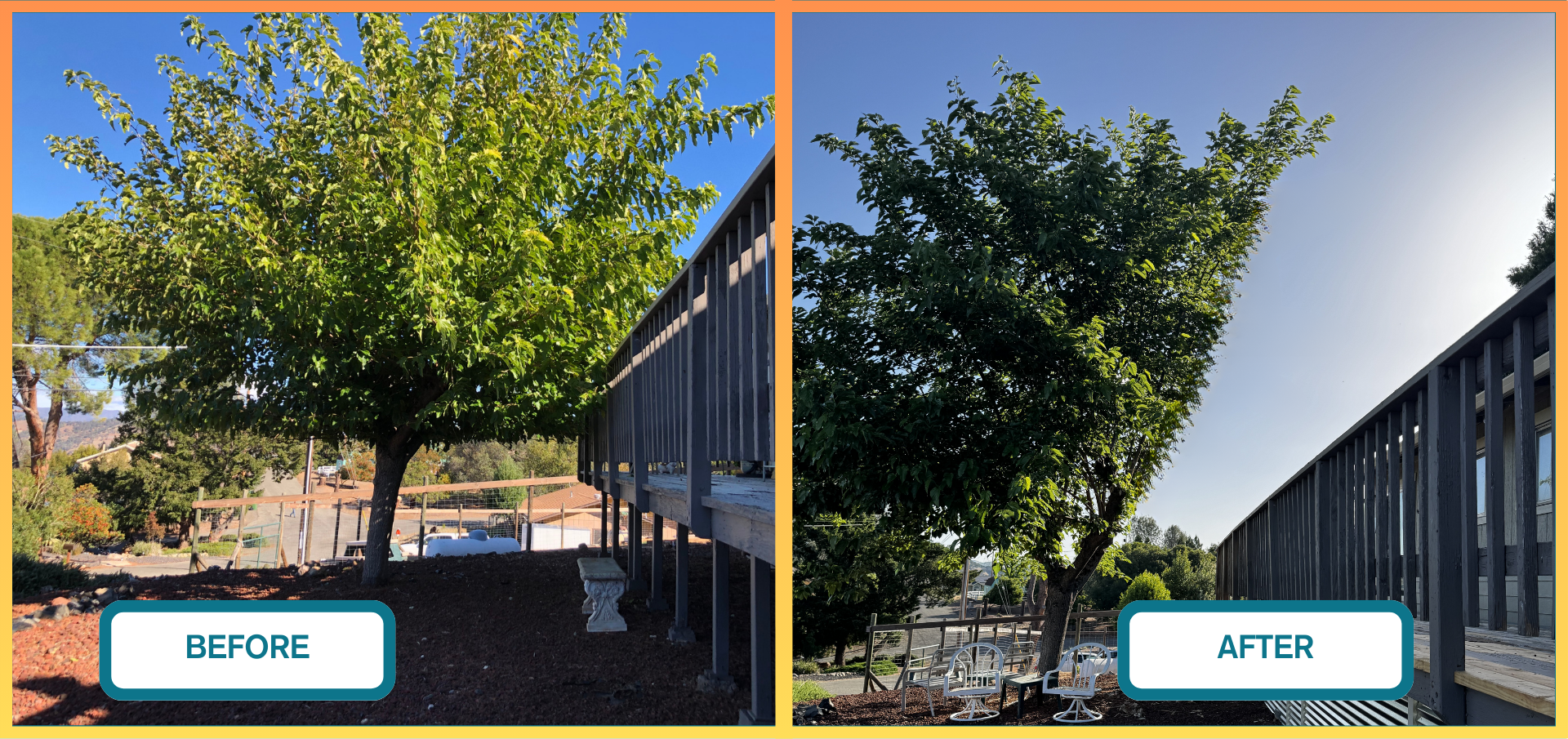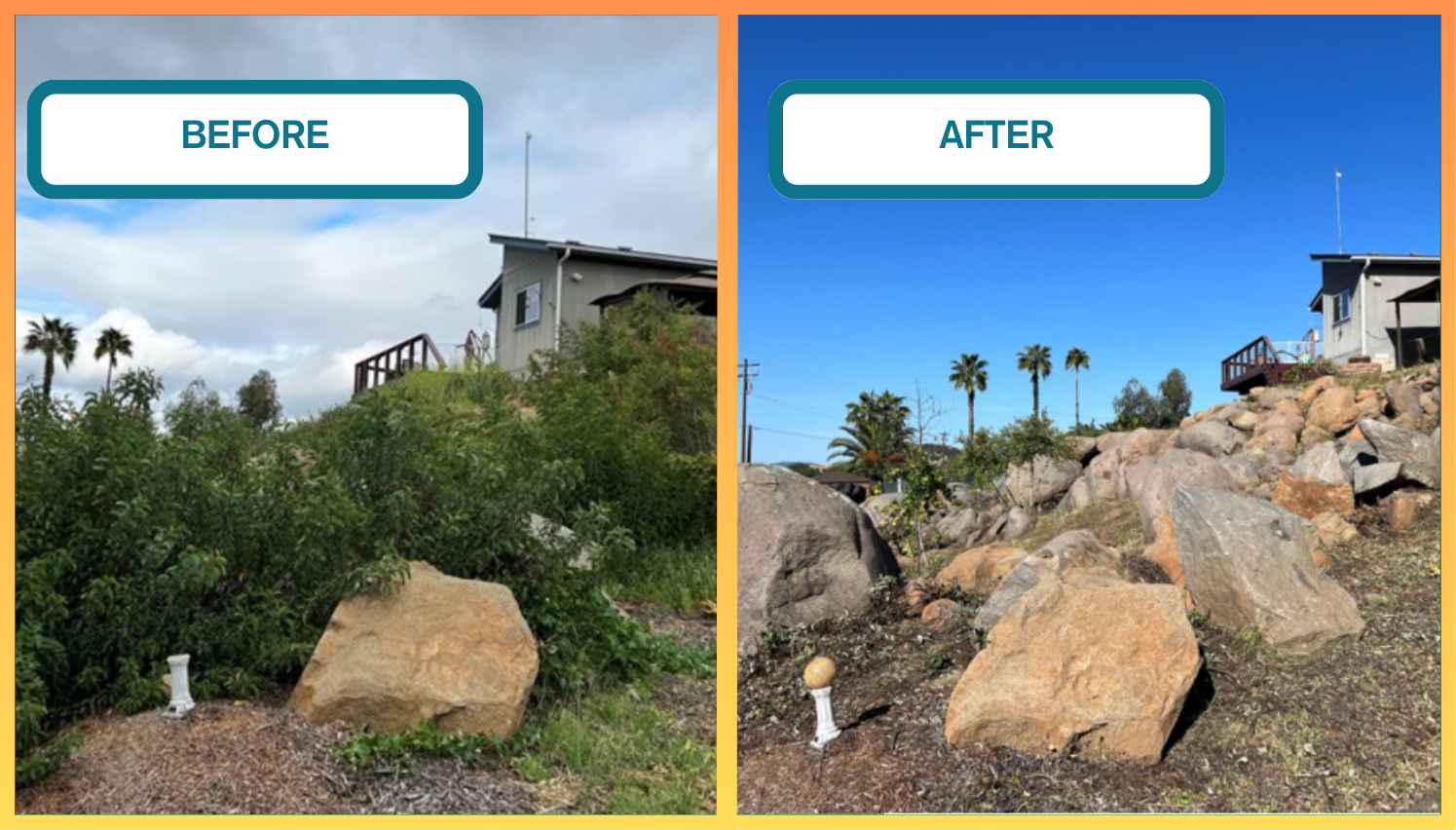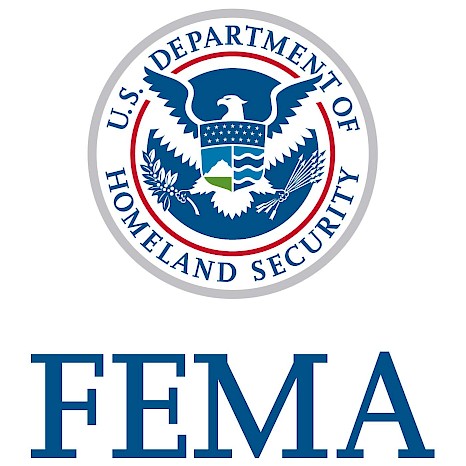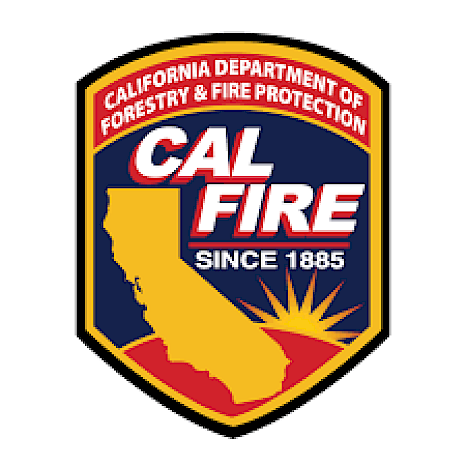Fire Wise Landscaping to Enhance Defensible Space
Fire-resistant landscaping encompasses much more than basic yard maintenance. It combines smart plant selection and upkeep to help stop wildfires from reaching your home. With thoughtful planning, preparation, and regular care, you can create a beautiful, water-efficient, and fire-resistant landscape for your home.
CAL FIRE’s Staff Chief of Wildfire Risk Reduction, John Morgan, emphasizes: "No plant is truly fire-safe. While some are described as fire-resistant, all plants will burn under the right conditions. The environment often plays a larger role in determining combustibility."
- Avoid direct contact: Don’t let plants touch your home, especially critical areas such as siding, windows, eaves, vents, or decks, to minimize fire risks.
- Zone 0 (0–5 feet): Keep this area next to structures clear of combustible plants and materials to prevent ember ignition and direct flame contact.
Let’s do better with this knowledge in mind to create fire-smart landscaping that helps protect our homes.
General Guidelines & Key Points:
-
Fire-Resistant Plants: Fire-resistant plants tend to share characteristics that make them suitable for fire-prone environments.
-
Native Vegetation: Choose native vegetation and/or pollinator-friendly plants where appropriate to promote biodiversity and resilience.
-
Hedge Plants: Select hedge plants that possess fire-resistant characteristics for effective screening.
-
Remove Mulch: Eliminate all mulch, as it has been shown to ignite even up to 2 hours after embers begin smoldering.
-
Synthetic Lawns and Turf: Be aware that synthetic lawns and turf have not been rated for fire resistance and most are petroleum-based.
-
Proper Spacing: Use proper spacing between plants to slow the spread of fire. More space is required on slopes to minimize risk.
-
Hardwood Trees: Plant hardwood trees that are less likely to ignite compared to conifers like pine or cypress.
-
Leaf and Needle Litter: Be aware of the potential for leaf and needle litter in the fall, which can pose additional fire risks.

Hardscaping for Wildfire Safety
Creating a fire resilient property starts with the foundation, literally. Hardscaping is an essential part of wildfire defense, especially in the critical 0–5 feet Zone 0 surrounding your home. Unlike plants, mulch, or other combustible materials, hardscaping elements such as gravel, paving stones, or other noncombustible materials provide a sturdy, fire-resistant barrier that embers can’t ignite. Incorporating a permeable weed barrier under your chosen hardscape material ensures durability while keeping the area clear of vegetation that could light from embers or fuel flames.
By replacing flammable ground covers with hardscape in Zone 0, you create a low-maintenance and visually appealing buffer that significantly reduces fire risk. Combining hardscaping with regular upkeep and other wildfire preparedness measures can make all the difference in safeguarding your home. When it comes to wildfire resilience, hardscaping is not just a design choice; it’s a lifesaving strategy.
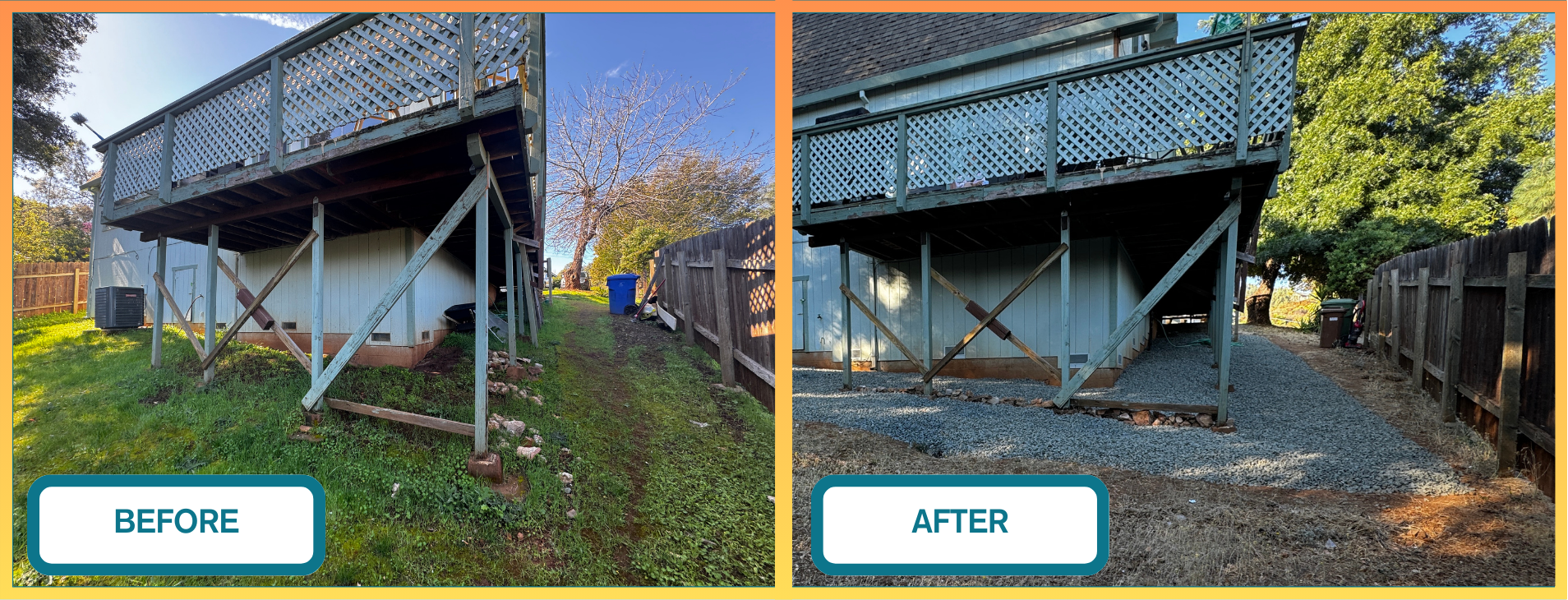
Create Vegetation Separation
Proper spacing between grass, shrubs, and trees is key to slowing the spread of wildfires. This spacing varies based on vegetation type, size, and land slope. Larger plants on steeper slopes require more space than smaller vegetation on flat areas.
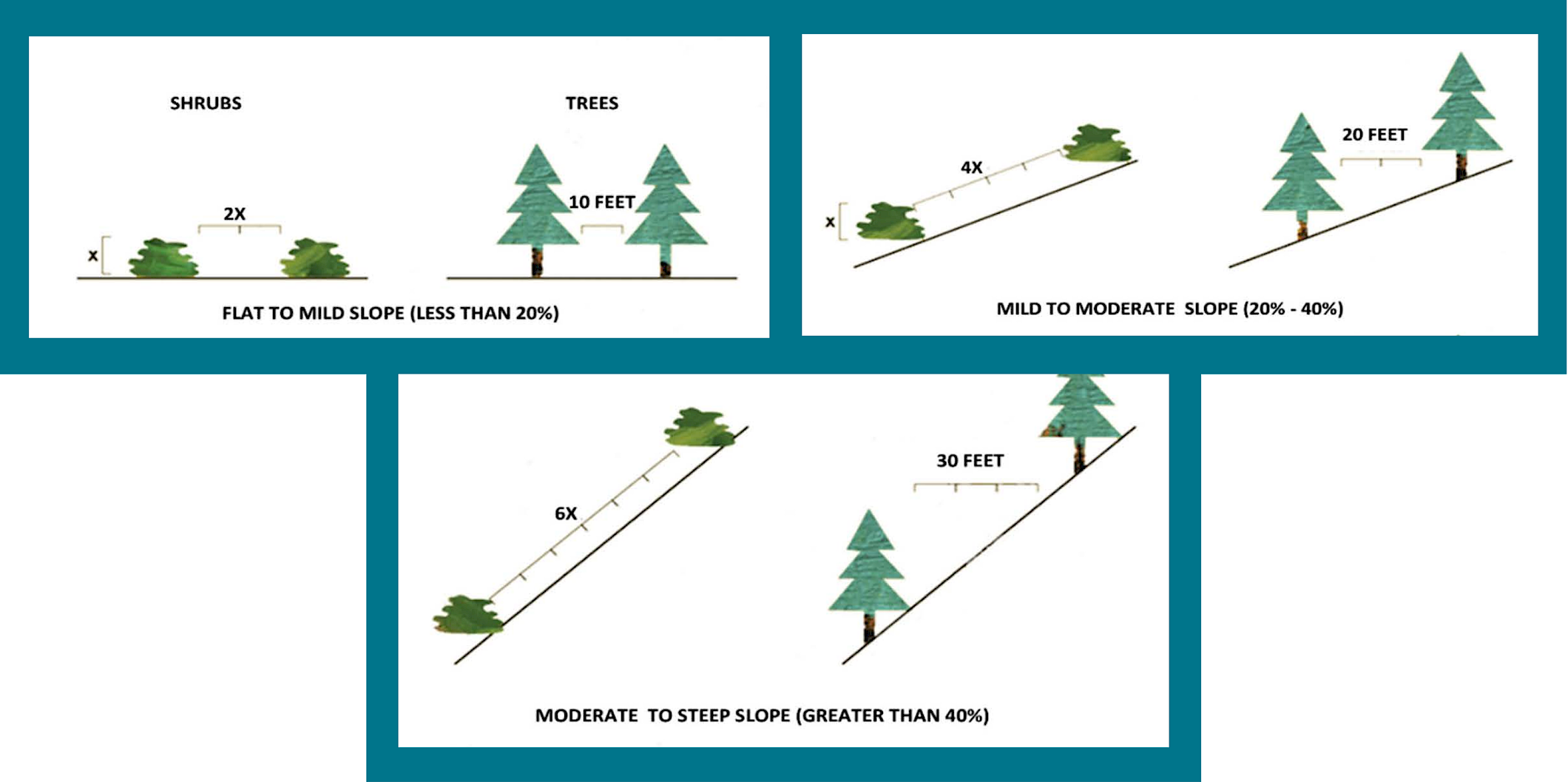
Resource provided by CAL FIRE
Horizontal Spacing:
- Horizontal spacing depends on the slope of the land and the height of the shrubs or trees. Refer to the spacing chart for specific distances.
Vertical Spacing:
- Trim tree branches up to at least 6 feet from the ground or for smaller trees 1/3rd of the way up from ground level.
- Increase vertical space between shrubs and trees to prevent fire from climbing ladder fuels.
- Use a formula for vertical spacing: Multiply shrub height by 3 for clearance. For example, a 5-foot shrub near a tree needs 15 feet of clearance to the tree’s lowest branch.
If you have any additional questions please contact us at homehardening@ncoinc.org or call 707-461-0760.
